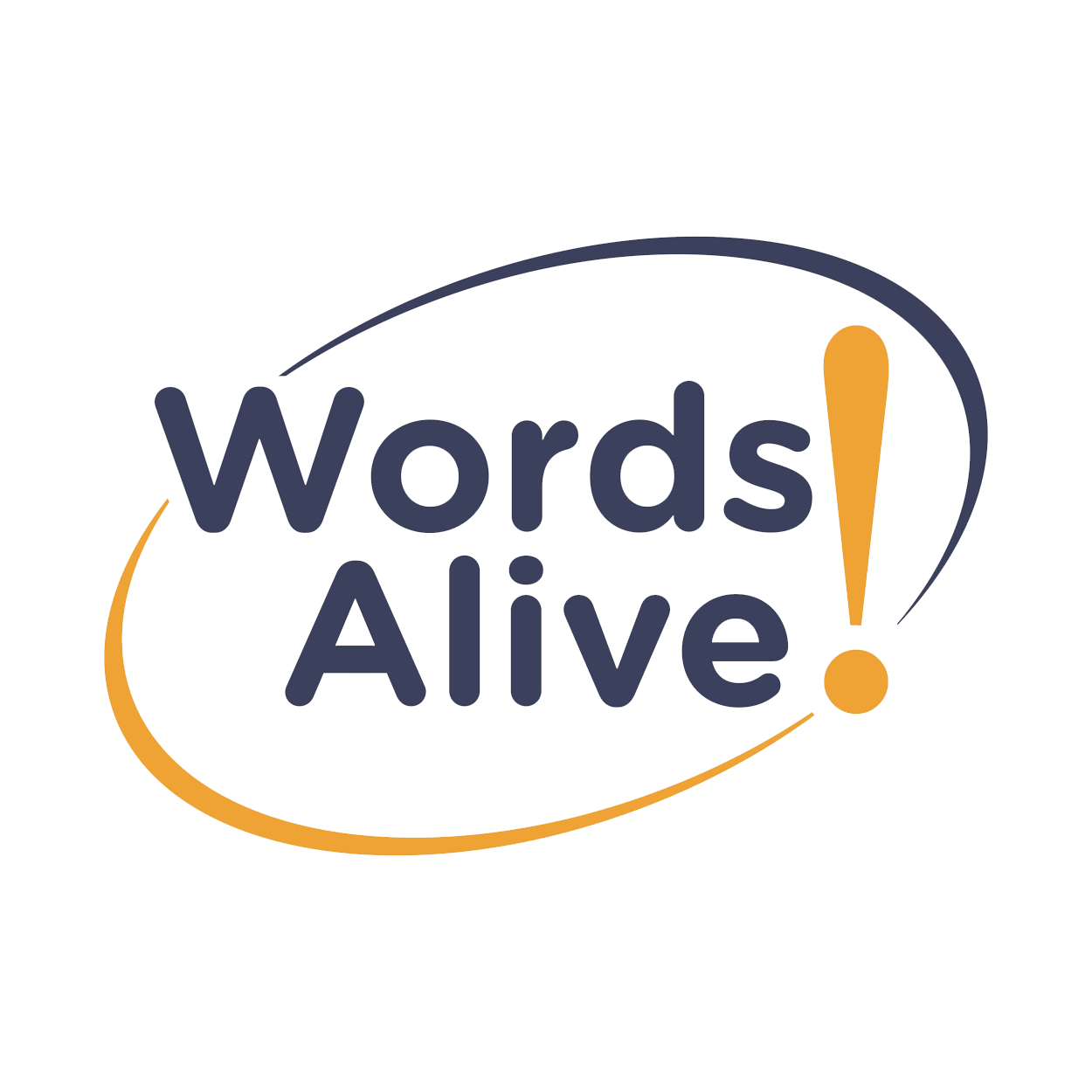Welcome to The Words Alive Reader, a regular newsletter keeping you up-to-date with the latest in how we've been connecting children, teens, and families to the power of reading. What have we been up to and how can you help? Read on to find out!
This newsletter, in addition to our blog and social media content, is written by us, a cohort of volunteers! Do you love writing and have an interest in helping Words Alive create this type of content? We'd love your help! Email to learn more.
- Zoe, Eli and Titiksha, Words Alive Storytelling Team
Processing the Election With the Power of Writing
Red, blue, and purple word bubbles made of paper spell “Be The Change.”
In our last edition of The Words Alive Reader, we shared about the launch of our virtual Read Aloud Program — we now have 33 classrooms participating! This week, we want to share something else we've been working hard on: Write Now, a digital space for teens to cope and connect with current events through writing.
As emotions run high over everything that's going on in our country right now, we're highlighting several of our Write Now prompts that feel especially fitting for this moment. Use them with your students or children, or try them for yourself. We hope that they empower everyone to reflect and respond in healthy ways to current events.
Explore positive ways to respond to the news, remember to take a self-compassion news break, and, finally, think about ways to be the change you wish to see in the world.
2020 Authors Event & Fundraiser: Success!
Screenshots of Ayad Akhtar, Dr. Seth Lerer, and an image of Homeland Elegies. Text reads: “Annual Authors Event — Featuring Ayad Akhtar in conversation with Dr. Seth Lerer.”
With an entirely new, online format, this year's Annual Authors Event and Fundraiser was an adventure for all of us! We are grateful for everyone who came together to make this event a success.
More than 250 attendees joined us from all over the country, raising $77,000 to connect children, teens, and families to the power of reading. It brought us so much joy to see our community come together in this way.
If you missed the event, don't worry! You can still support us by purchasing access to the prerecorded conversation between Seth and Ayad through the end of 2020. Thank you for supporting Words Alive!
Write Now with Susan Meissner
A picture of Susan Meissner in front of posters of her books.
Susan Meissner is an acclaimed author, a San Diego local, a Words Alive volunteer, AND one of the authors in this year's Authors Auction! At our latest Write Now workshop for teen writers, brought to you by Words Alive and the San Diego Public Library, she had plenty of advice for aspiring writers, especially when it comes to tackling the familiar enemy known as writers’ block. “It’s kind of like when you go into a pool, or the ocean, and the water is kind of cold, but stay in it, and your body finally acclimates,” she said. It’s all about persistence!
Find the full workshop, along with other exclusive videos from published authors, on our website!
Plot Twist: Logan Holland
A picture of Logan Holland.
Our volunteers come from all different kinds of backgrounds, proving that great books impact us all. Take Logan Holland, for example: a graduate student in biology at UC San Diego. The lessons she draws from her favorite books go hand-in-hand with her studies. As Logan puts it, “I wanted to understand humans biochemically, and then figuratively with literature.”
To read more about Logan’s unique perspective on the intersection of science and literature, and learn why she volunteers with Words Alive, check out Plot Twist, our new blog series! Keep an eye out for more stories in the future on the Words Alive blog.
Join the Words Alive Page Turners!
Graphic illustrating the “Life Cycle of a Page Turners Book.” Through Page Turners, new books are (1) discovered, (2) read, (3) reviewed, and (4) loved by our program participants!
We launched Page Turners in January so volunteers could help us choose the books we read with our students. Since then, more than 600 volunteers have joined Page Turners, contributing nearly 1,900 hours of service! This has allowed us to add 30 new books into our programming, with the knowledge that students will be engaging with high-quality titles our Page Turners have already read and loved. Some of our students at Monarch School are even reviewing books for Page Turners! Through this program, they're taking ownership of what they read in a very tangible way.
Are you interested in joining a community of passionate readers who are helping us read and review books? Visit our website to learn more.





















